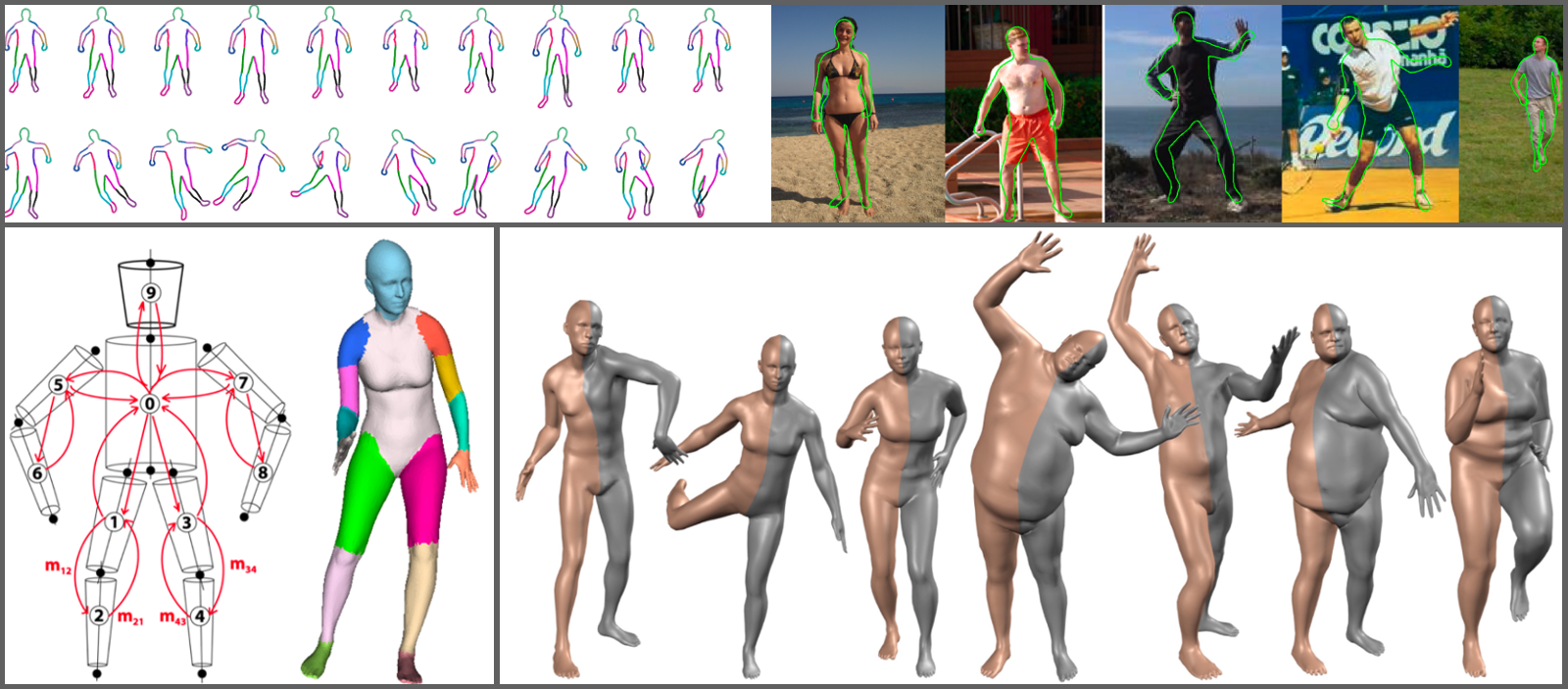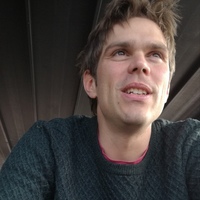Human Pose, Shape and Action
3D Pose from Images
2D Pose from Images
Beyond Motion Capture
Action and Behavior
Body Perception
Body Applications
Pose and Motion Priors
Clothing Models (2011-2015)
Reflectance Filtering
Learning on Manifolds
Markerless Animal Motion Capture
Multi-Camera Capture
2D Pose from Optical Flow
Body Perception
Neural Prosthetics and Decoding
Part-based Body Models
Intrinsic Depth
Lie Bodies
Layers, Time and Segmentation
Understanding Action Recognition (JHMDB)
Intrinsic Video
Intrinsic Images
Action Recognition with Tracking
Neural Control of Grasping
Flowing Puppets
Faces
Deformable Structures
Model-based Anthropometry
Modeling 3D Human Breathing
Optical flow in the LGN
FlowCap
Smooth Loops from Unconstrained Video
PCA Flow
Efficient and Scalable Inference
Motion Blur in Layers
Facade Segmentation
Smooth Metric Learning
Robust PCA
3D Recognition
Object Detection
Human Body Models

In the process of teaching computers how to perceive the world, there is a family of objects that stands out due to its complexity and importance: human bodies. The human body is highly articulated, deforms with kinematic changes, and exhibits large shape variability across subjects while clothes and hairstyles create a large variety of appearances.
We argue that making a computer able to model, perceive and generate human appearance would not only be clearly valuable in terms of practical applications, but would also entail a great step forward in the task of making computers perceive the world around us. This problem has been tackled both in computer vision, with a long tradition of model-based methods for human detection and pose estimation, and graphics, where the ultimate goal is a faithful reproduction of real human bodies.
Our research in human body models is driven towards a convergence between models used in Computer Vision and Computer Graphics: realistic and efficient models that are suitable for parameter inference from data. Modeling bodies and performing inference with them is typically computationally expensive. Our Contour People (CP) model [] enables 2D pose inference methods while mantaining realistic body shapes more common to 3D models. The Stitched Puppet (SP) model [
] taks an alternative approach towards efficient inference by exploiting the composability of human bodies into parts and performing message-passing inference.
Finally, we are working towards modeling realistic virtual humans. To that end, we have developed a series of different 3D body models that can be used for both graphics and vision: BlendSCAPE [], Delta [
], Dyna [
] and SMPL [
]. In particular, SMPL is a realistic human body model that retains a simple . SMPL distills thousand of body scans into a 3D statistical model of the human body with state-of-the-art realism (comparable to or better than much more complicated models), real time rendering, and full compatibility with standard animation software.
Members
Publications






